I can tell it’s going to be cold tonight.
All day, I’ve been stocking the woodstove. Even though a propane heater in the living room keeps the chill down for the kids playing, in the kitchen it gets cold if you don’t keep feeding the iron beast.
Our house is old, built in the 1940s, with a small floor plan that maps out in a series of tiny rooms. One of the windows was repaired with a sheet of plexiglass, so it doesn’t do much when the temps drop. One of the walls consists of the thick beams of the house itself, sheetrock, and wallpaper. No insulation necessary. That wall is always the coldest in the house.
Putting on my layers, I head out to feed the sheep. The baby is taking a nap, and the three older kids are working on a book. One writes the story, one draws the pictures, and one mainly watches, sprawled on his belly across the kitchen table to get a better look.
Base layer, sweater, vest and wool coat. Gloves, wildrag, and sock hat. Muck boots and wool socks are a must. Most of the time my blue jeans work well enough for my legs, although some days the wind is cold enough to burn through them. If I was going outside for any length of time I’d put on my long underwear, maybe even chaps over top of the jeans.
For now, this’ll do.
I put extra hay on the wagon. With cold nights, these animals need more to eat. Eating literally keeps them warm, as the rumen digestion generates heat. It makes sense to me. In the winter I eat a lot more grass-fed butter. The sheep all come running, clustering around the pickup as I tell the little mutt-dog to stay put, and hop out to cut the strings.
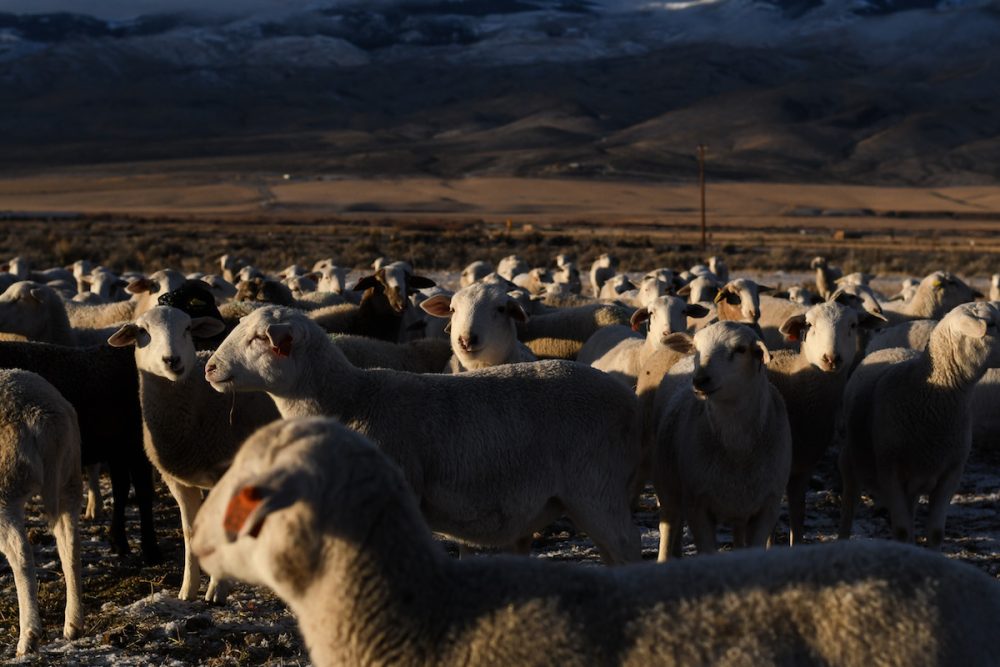
It’s harder with one person. Sometimes in older vehicles there’s low-range, which crawls the truck along at walking speed. The driver can get her rolling in low range, hop out, leaving the door open, and go feed as the truck walks itself along. All you need is a straight stretch to feed on and you can do it alone. You can even come back, stick your arm in to adjust the wheel a bit, and go again. But I always leave the door or a window open. Dad’s told me a story of a rancher with a brand new pickup who went out to solo feed. He rolled the window and closed the door. Nice and warm in there. Cowdog, snug inside the cab, stepped on the automatic locking button. Click.
When the cattle were all fed and the rancher came to jump in, the truck was locked up tight. The dog watched helplessly through the window as the truck walked itself toward a steep hill. The rancher, thinking quickly, grabbed a rock and bashed through the drivers’ window. He jumped in and stomped on the brakes just in time to save his new pickup from diving off the edge.
I can’t do the solo feed because I don’t have low range. I just have to spread the hay by hand and jump back in, move along and spread some more. It takes more time. I have a CD in the pickup that the pickup won’t give back. It’s 1950s hit songs. Some are great…some of them you wonder why they were hits at all. There’s a little of everything: Opera, jazz, flamenco, country, folk, big band and gospel. When the children go feeding with me, they like to hear “Sincerely”, by the McGuire Sisters.
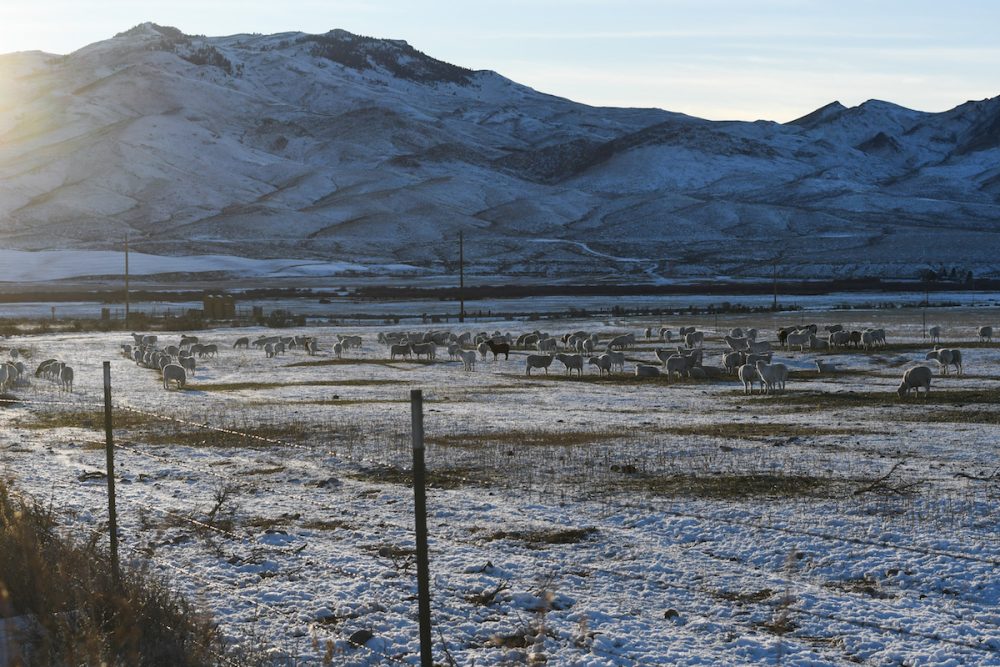
I cast my eyes over the entire flock. We lost one, recently, to pneumonia. Pretty much all you can do is hit them straight away with antibiotics as soon as they start looking poorly. Well, we weren’t quick enough. Nothing like losing someone to give you a wake-up call. I look over several times, watching for anything. Anyone standing alone, not eating. Anyone with drooping ears. Anyone who doesn’t look bright and eager. Anyone who takes a long time to come up to feed.
“Good dog,” I tell the mutt, as I get in the truck. Darby wags her tail. She’s still a puppy, but I have hope she’ll turn into a dog. After all, she stayed put in the back seat like I told her.
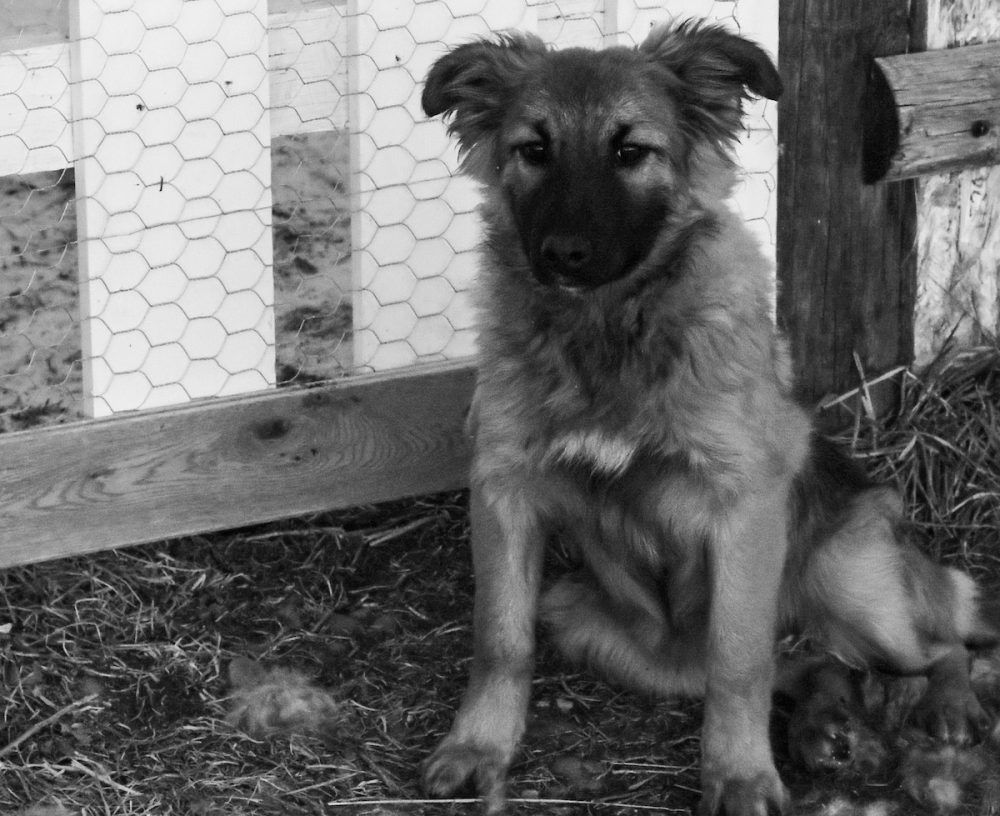
By the time I’ve parked the truck and plugged the tractor in to load hay tomorrow, twilight is spreading over the valley. The mountain tops are orange and pink, every line and furrow etched with light blue. It’s a breathtaking sight. Alpenglow, it’s called, when that last burning pink light hovers on the snow-capped mountain peaks. It usually means it’s going to be cold. Indeed, there ain’t a cloud in the sky.
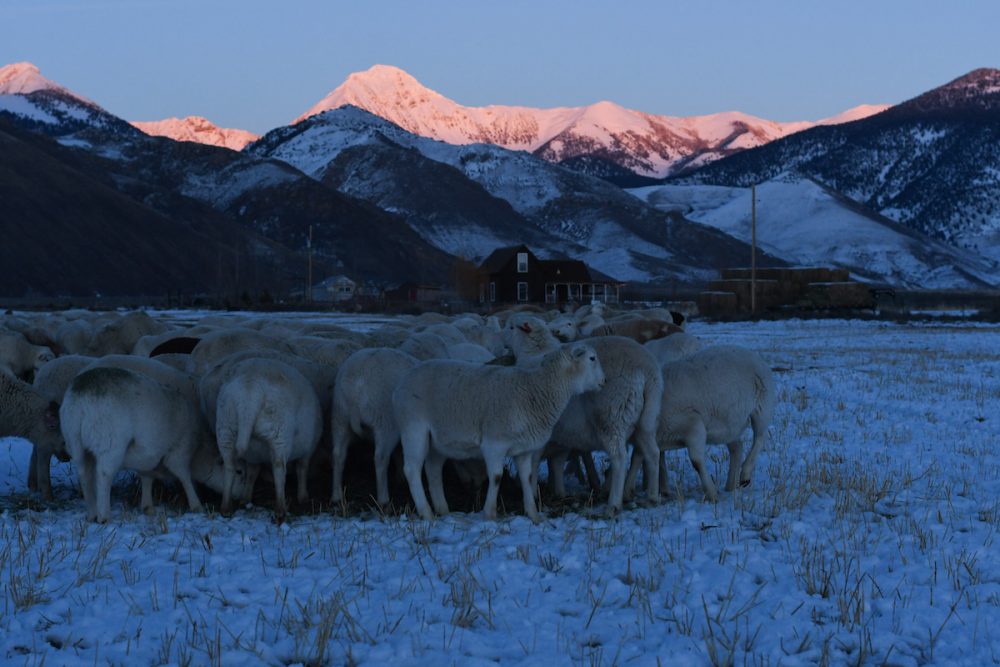
I refill the salt box, break the ice, and then get the garden hose hooked up to fill the tanks again. It’s amazing how many things are a royal pain when water isn’t liquid anymore.
Once the tanks are full, I drain the hose of every last bit of water—twice. I don’t want any ice chunks interfering with me tomorrow, when those hoses are stiff and frozen. At least they’ll be empty.
The blue deepens as I bring in more firewood. So many blues. There’s the silver-blue iridescence of the snow, glowing as it reflects the last light. There’s the deep purple and navy blue of the mountains, with their sharp edges cut out against the sky, like they’ve been cut from paper. There’s the yellow fading to blue, the northern night swallowing up the day. That light holds for a long time, but the temperature is dropping all the while. Suddenly my nose begins to prickle, breaths are a little more difficult, and the snow becomes squeaky underfoot.
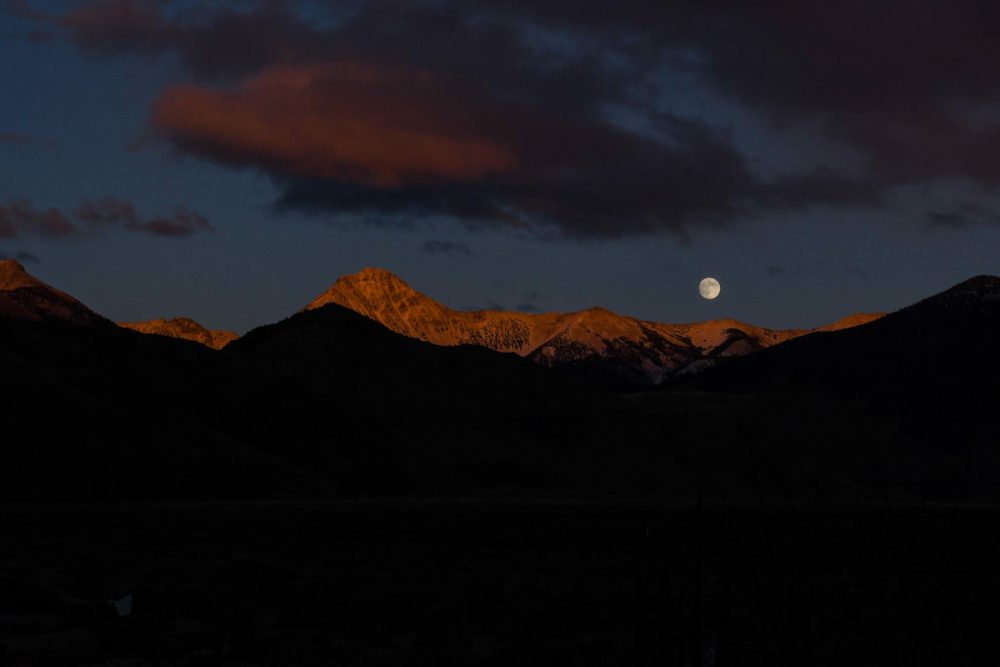
Before you know it, it is night, the beginning of another long winter night.
I come inside and take off the layers, grateful for a warm house. The children have finished writing their book and are drawing flowers on the back for decoration. The boy has lost interest. I rewarm a cup of cold coffee as the fog clears from my glasses.
The last bit of blue fades from the sky. Now the lights of the night-calvers, our neighbors, start flickering on. Headlights from pickups, and high power spot-lights, in the fields up and down the valley. I’m glad that we don’t start lambing or calving until May.


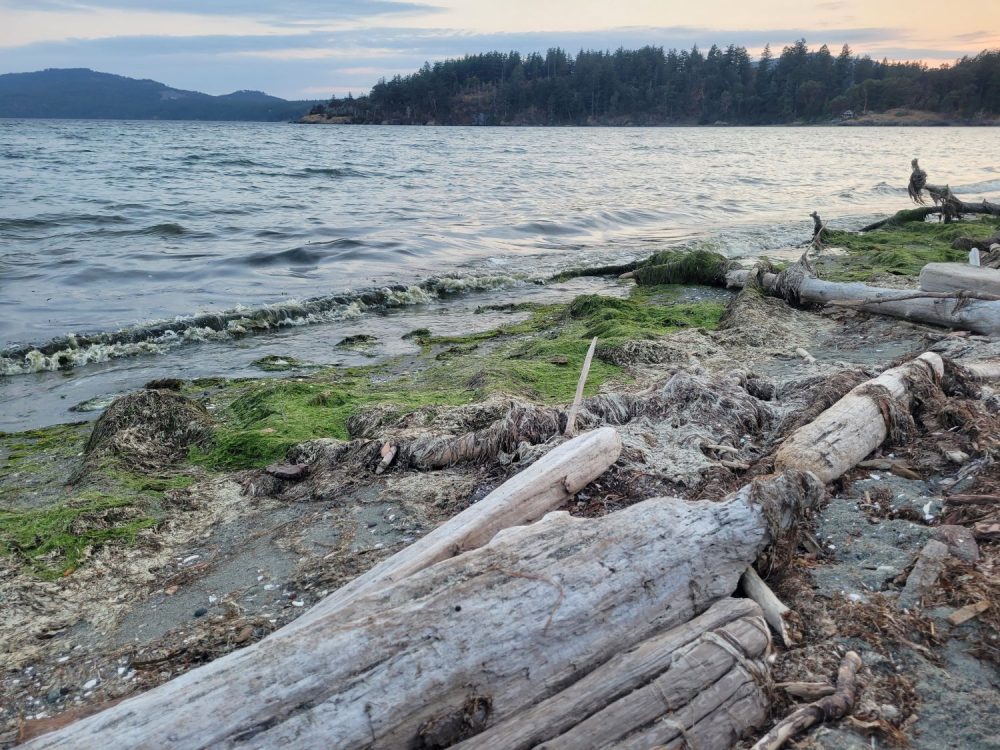
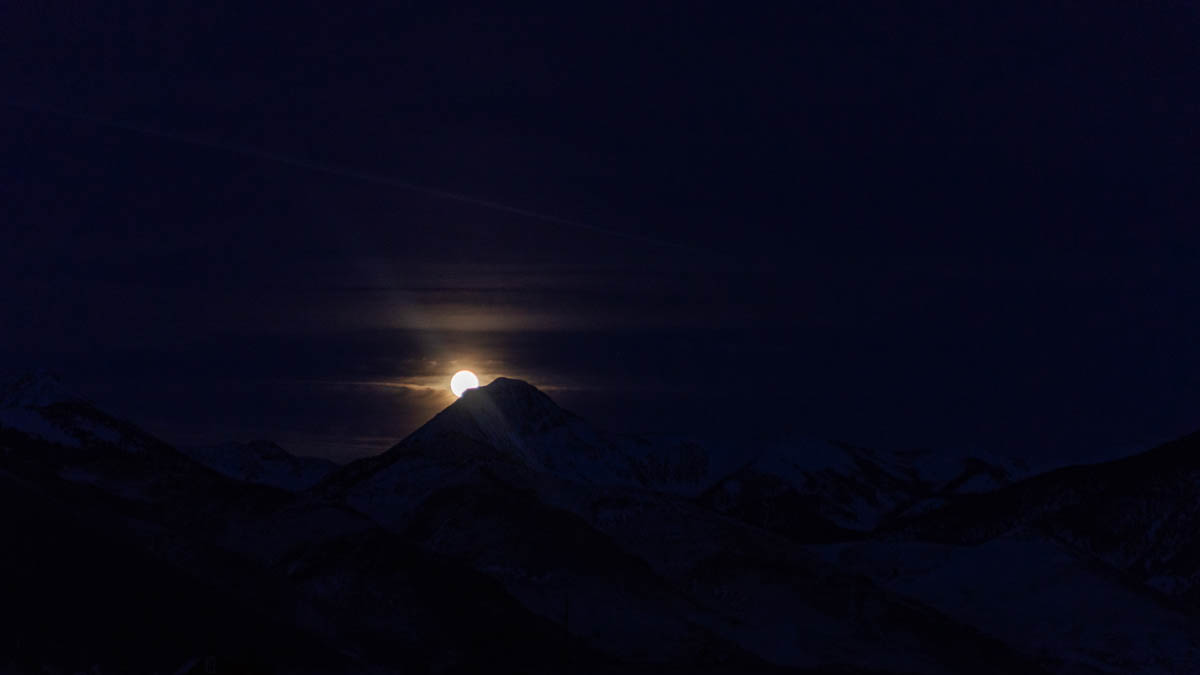



Shirley
You’re a hard worker Abby, just like your dad. Weren’t you afraid your son might fall off the table? Where is your hubby, working on leather goods? Well written story; learned that from your dad too!?
Mel Kallio
Dear Abby,
Oh I remember those days well old house from early 1900’s several small rooms but also an upstairs with grates in the floor to supposedly let some heat up there at night . 2 iron wood stoves , a pot belly in living room and big cast cookstove in kitchen with a hot water tank on one side . No insulation in the walls , no running water. But we survived . My job as a kid was keep the wood box full every afternoon after school and water pails from a hand pump well. Also dressed much as you mention but still cold if it was windy . Haul 5 gallon buckets of chop to the yearlings , and milk a cow ( we had 4-5 so brother did the others , after he took a load of hay or bales out to the range cows . ‘They ” read about pioneers ,but we lived it , even much later when I was a kid . Most people smile and think I make it up. Time marches on some traditional ways of life do also as you well know ! Stay warm , friend , by shared memories present and past.
Mike
Grew up in Wyoming, where coal was lots cheaper than wood. My job was to chip frozen coal into the hods and shlep them into the house. When it got below zero, light up the stove in the barn for the two milk cows. My mom did the morning milking, I did the afternoon.
I’m 82 now; you’re day makes me nostalgic…. and tired!
erik storlie
Great to see Elzinga daughters picking up the ranching torch as well as the storytelling pen. I’ve been reading faithfully since Glenn began the blog and learn more and more about this Hat Creek country.
Erik Storlie, Big Hat Creek Ranch (sort of ranch)